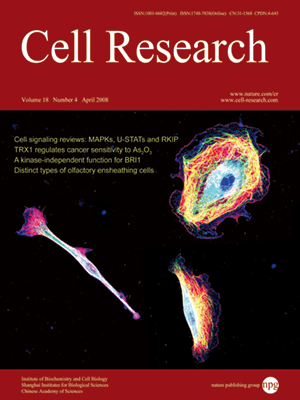
Volume 18, No 4, Apr 2008
ISSN: 1001-0602
EISSN: 1748-7838 2018
impact factor 17.848*
(Clarivate Analytics, 2019)
Volume 18 Issue 4, April 2008: 508-521
ORIGINAL ARTICLES
Constitutive expression of pathogen-inducible OsWRKY31 enhances disease resistance and affects root growth and auxin response in transgenic rice plants
Juan Zhang1, Youliang Peng1 and Zejian Guo1
1State Key Laboratory of Agrobiotechnology, Department of Plant Pathology, China Agricultural University, Yuanmingyuan West Road 2, Beijing 100094, China
Correspondence: Zejian Guo(guozj@cau.edu.cn)
WRKY transcription factors have many regulatory roles in response to biotic and abiotic stresses. In this study, we isolated a rice WRKY gene (OsWRKY31) that is induced by the rice blast fungus Magnaporthe grisea and auxin. This gene encodes a polypeptide of 211 amino-acid residues and belongs to a subgroup of the rice WRKY gene family that probably originated after the divergence of monocot and dicot plants. OsWRKY31 was found to be localized to the nucleus of onion epidermis cells to transiently express OsWRKY31-eGFP fusion protein. Analysis of OsWRKY31 and its mutants fused with a Gal4 DNA-binding domain indicated that OsWRKY31 has transactivation activity in yeast. Overexpression of the OsWRKY31 gene was found to enhance resistance against infection with M. grisea, and the transgenic lines exhibited reduced lateral root formation and elongation compared with wild-type and RNAi plants. The lines with overexpression showed constitutive expression of many defense-related genes, such as PBZ1 and OsSci2, as well as early auxin-response genes, such as OsIAA4 and OsCrl1 genes. Furthermore, the plants with overexpression were less sensitive to exogenously supplied IBA, NAA and 2,4-D at high concentrations, suggesting that overexpression of the OsWRKY31 gene might alter the auxin response or transport. These results also suggest that OsWRKY31 might be a common component in the signal transduction pathways of the auxin response and the defense response in rice.
Cell Research (2008) 18:508-521. doi: 10.1038/cr.2007.104; published 11 December 2007
FULL TEXT | PDF
Browse 2024


